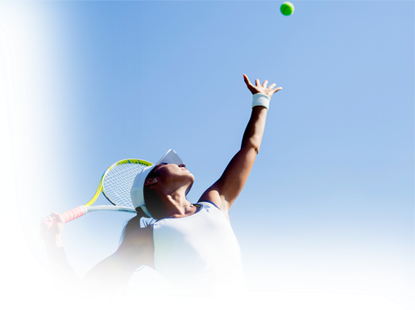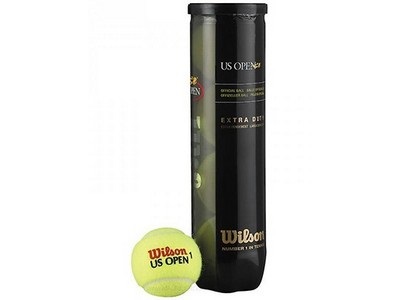How To Choose a Tennis Equipment
Tennis is one of the most popular sports nowadays. It is most fun when you have the right racket, ball and other equipment. But choosing them may not be easy, because everyone needs something different. E.g. a larger, heavier and stiffer racket is more suitable for a beginner than for an experienced tennis player. What are the exact parameters? In our guide, we will explain everything to you and advise you on how to choose the right tennis equipment.

Chapters of the Tennis Equipment Guide
The most important part of tennis equipment are undoubtedly rackets. If you’re a beginner, we recommend lighter and stiffer rackets. At the same time, however, they should have a larger head area so that you can hit the ball better. Conversely heavier, more flexible rackets with a smaller head are more suited to experienced players. The taller you are, the longer the tennis racket should be.
What is important when choosing a tennis racket?
Tennis racket according to the player's level
Beginner
If you’re a beginner at tennis, choose a racket with a larger head, because it will make it easier for you to hit the ball. The size of the head is given in cm2 and the ideal choice for a beginner will be 740 cm2 and more. We also recommend a racket with a stiffness of RA70 and more, as it will be more accurate. The last important parameter is the weight of the racket itself. It should be light , specifically up to 260 grams. A tennis racket for beginners should therefore have the following parameters:
Advanced
If you've been playing tennis for some time and would like a racket for a more technical game, choose the Midplus size. This head is smaller and will offer more force and speed. We recommend the rigidity of the frame to be from RA60 to RA70, due to the increased strain on the shoulder joints and muscles. The weight of the racket should range from 260 to 300 g. An advanced tennis racket usually has the following parameters:
Professional
For professional tennis, choosing a racket is a very difficult process. They are Midsize and Small size, and can generate a lot of force when striking and are extremely accurate once you’ve mastered the right technique. If you hit the ball badly, the racket will not forgive you and the shot will be way off. Tennis rackets for professionals are characterized by the following features:
Head size
One of the most important parameters when choosing a tennis racket. It is divided into 4 sizes according to the player's level.
Mass
Another very important parameter is the weight of the tennis racket. It is again divided into 4 groups according to the player's level.
Balance
A properly balanced tennis racket will ensure better maneuverability for beginners or greater force for professionals. It is divided into three basic categories.
Frame stiffness
The rigidity (or flexibility) of the tennis racket frame is expressed using the RA scale (standard index from 0 to 100) and is divided into three groups.
Length
The length of the racket is divided into three basic groups according to the age and height of the player.
Grip size
The size of the grip is divided into five groups. The European designation is L0 to L5, while the American designation is a bit different as it is in inches (in local stores, the designation will be European by default).
Frequently asked questions when choosing a tennis racket
Which racket to choose for a child?
Everything depends on the height and skill level of the child. For children, rackets with an Oversize head are most often chosen because they provide a larger area for hitting the ball. If the child is more advanced, the Midplus size will be suitable. The balance of the racket should be hand or center with a rigid or medium rigid frame from 45 to 100 RA. The size of the grip should be from L0 to L2, again depending on the child's height/ hand size.
What are smart rackets and how do they work?
Smart rackets combine classic rackets with modern technologies. These rackets contain sensors that read data from each ball hit. This way you can find out the type and number of strokes, the type of rotation, the exact place of the strike, the force, the playing time, the technique and the overall consistency of your game. You will then be able to evaluate all the data in an app designed for the smart racket.
Smart rackets will give you a fairly detailed analysis of your game. You will know what to improve and what to focus on. They are an interesting tool not only for coaches, but also for players. Smart rackets are more suitable for advanced and professional players.
Tennis balls are important as you cannot play the game without them. But it is also important to make the right choice, because the balls behave differently on each surface. There are universal balls, but also special balls, for example specifically for clay. Quality tennis balls, often "approved" for professional tournaments, are made by Wilson, Head, or Dunlop.
What is important when choosing a tennis ball?
Balls by surface type
You will choose a tennis ball mainly depending on the specific surface you will be playing on. There are usually 2 types of tennis balls:
Sometimes you may come across balls that are designed for one specific surface, such as grass or clay.
Tip: If you are not sure which surface you will play on, choose balls for universal use.
Tennis bags and backpacks are used for easy and convenient transport of tennis rackets and other equipment. Backpacks are primarily intended for children, while bags are used more by adults, because they are larger and you can fit more into them.
What is important when choosing a tennis bag / backpack?
Bag / backpack size
The first question you should ask when buying a bag or backpack is: How many rackets do I want to transport at one time? There are backpacks that have space for only one racket and then also professional tennis "bags" that can hold up to 9. Larger bags also logically provide more space for your other tennis equipment and are often equipped with shoulder straps. With their help, carrying a bag is more convenient than if you had to carry it in your hands.
Frequently asked questions when choosing a tennis bag / backpack
When to buy a backpack and when is it worth buying a bag?
The answer to this question is relatively simple. It will all depend on the number of rackets and equipment you want to transport. If the target person is a child or just an occasional player, a tennis backpack for one racket and basic equipment will usually suffice.
If the player is more advanced, a tennis bag capable of holding 2 to 9 rackets and other equipment will be needed. If you are a professional and you own 3 or more rackets, which you alternate during the game, the best choice will definitely be bags with larger dimensions. These will provide you with a convenient way to transport all your rackets and equipment.
Tennis shoes

What is important when choosing tennis shoes?
Footwear by type of surface
Basically, you have a choice between two types of shoe. For a clay surface, shoes that have a (so-called) tree profile on the sole are an ideal choice. These are characterized by a high degree of grip to the surface and ensure you have a more secure position in the game. If, on the other hand, you are going to play on grass or concrete, it is better to choose shoes for all types of surfaces. Such shoes combine a tree profile with a special pattern that allows you to play on any surface (including clay)..
Shoe size
The right size of tennis shoes is just as important as it is everyday shoes. Choose the size so that it fits your foot tightly, as the tennis shoe will get slightly larger after they have been worn in. So definitely do not buy shoes that will be 1 or more sizes bigger than your foot.
Tennis clothes

The last thing you need when playing tennis is the right clothes. The traditional color of tennis is definitely white (that is why tennis is sometimes referred to as a "white sport"). However, this does not mean that you have to exclusively wear white. Other popular colors include red or blue.
What is important when choosing tennis clothes?
Functional material
Choose clothes made of a functional material, such as polyester. This will provide you with a great deal of comfort and breathability, as you will sweat profusely on the court. It is better to invest more money in higher quality products, which will not deteriorate even after several washes.
If you are a man, the choice is simple - tennis shorts and a T-shirt, like a polo shirt or a classic T-shirt. In addition, the ladies have a choice of skirts and strapless tops, thanks to which they will feel elegant and comfortable at the same time.
Tennis accessories

Glossary - tennis equipment
Sweetspot
An ideal place in the racket for the player to hit the ball. The larger the size of the head, the larger the sweetspot (ie beginners have a better chance of hitting the ball in the sweetspot). In contrast, Midplus and Midsize rackets have a smaller sweetspot, so players must have perfect control when hitting the ball.
Balance point
The balance point, or also the balance of the racket, indicates for whom the racket is intended. It is divided into three basic groups: head balance, center balance and handle balance. It is most often measured in cm, sometimes also stated in mm. Choosing a racket with the right balance according to the player's level significantly affects the technique of the stroke and will also affect their game as a whole.
Tennis racket grip
The grip, or handle, forms the bottom of the racket that the player holds during play. It depends most on the player’s palm size, as it directly affects the playing technique. Grip is divided into five basic groups and can be referred to as European or American system. European ranges from L0 to L5 depending on size. The American one is measured in inches with the smallest being 4 inches and the largest being 4 and 5/8s inches.
Clay
Clay is a red colored surface of tennis courts made of crushed slate, burnt bricks, roof tiles or gravel. The name comes from the French ‘en tout cas’ which means under all circumstances. The reason is that the clay also permeates water well, so it can be played on in almost any weather.
Glossary




Another important component when playing tennis is having the right shoes. By choosing the right tennis shoes, you will achieve better results on the court. The most common choice is between clay shoes and shoes for all types of surfaces.